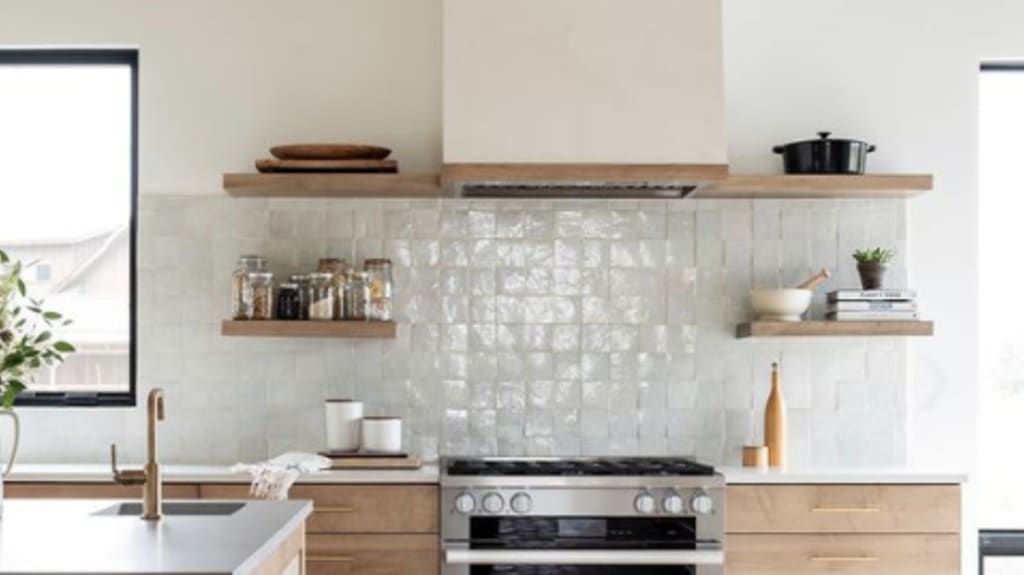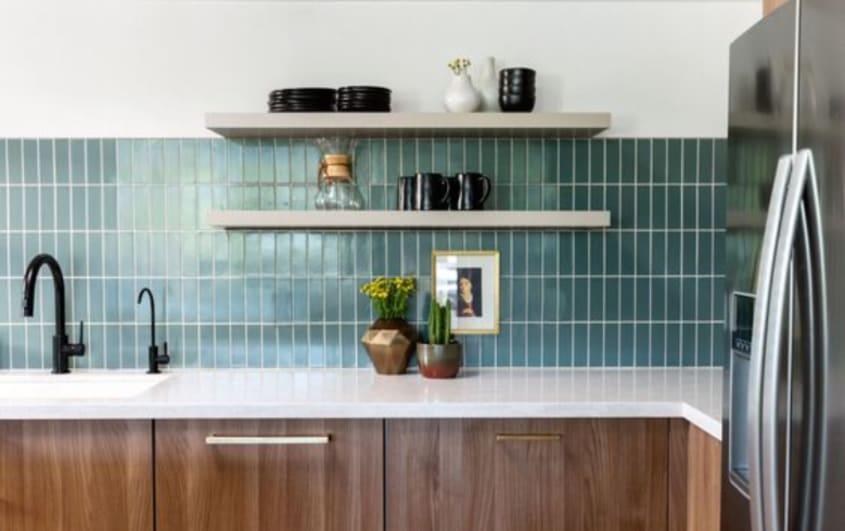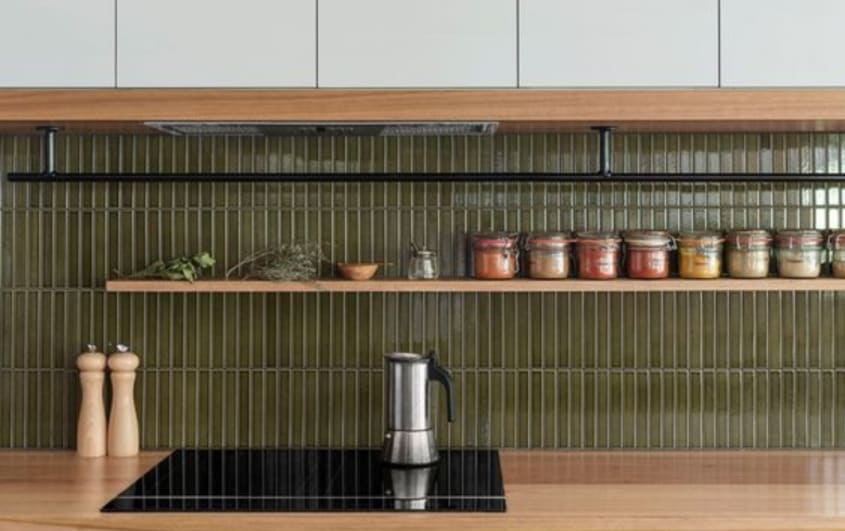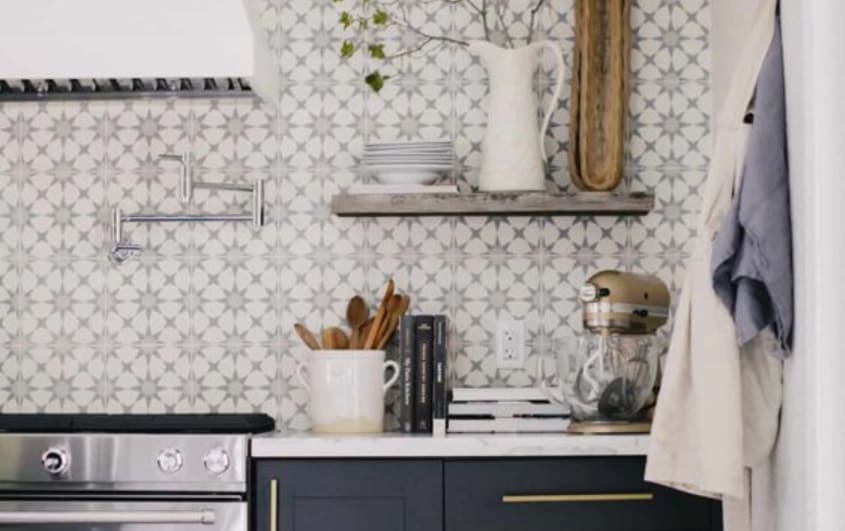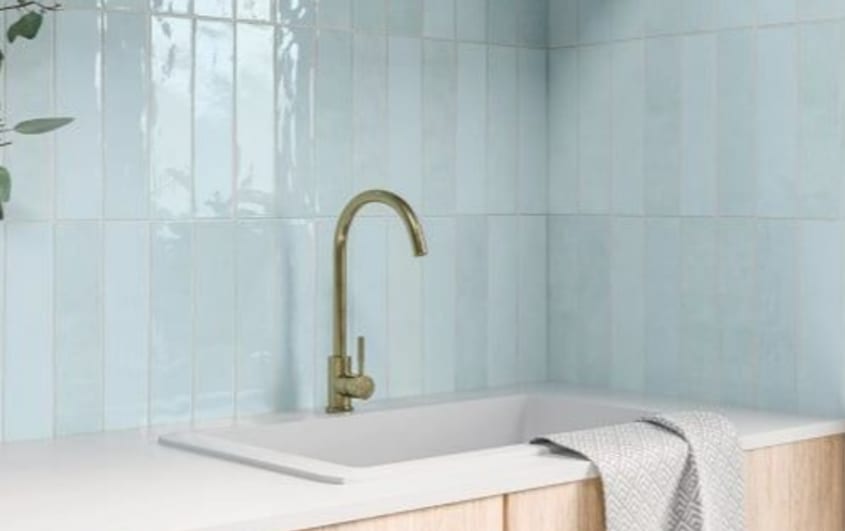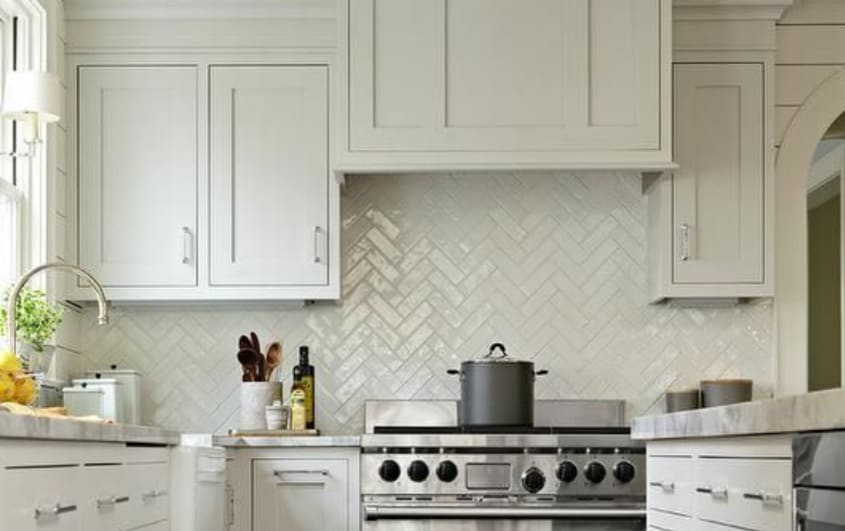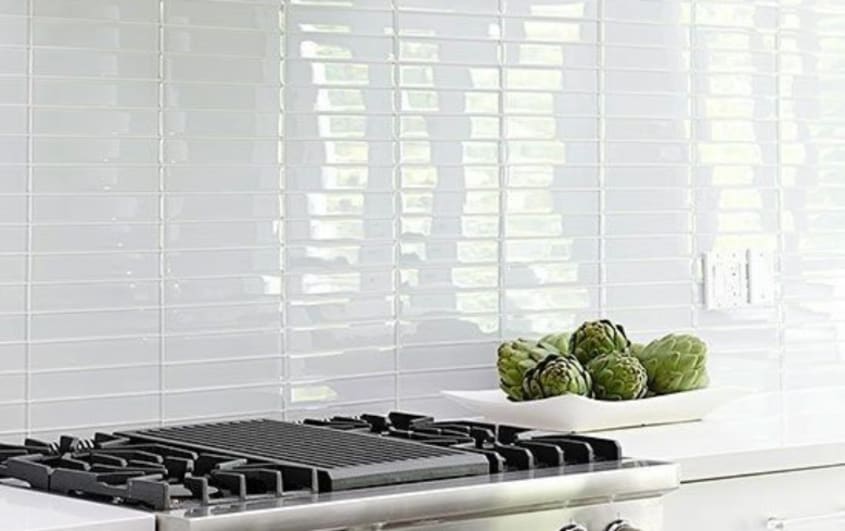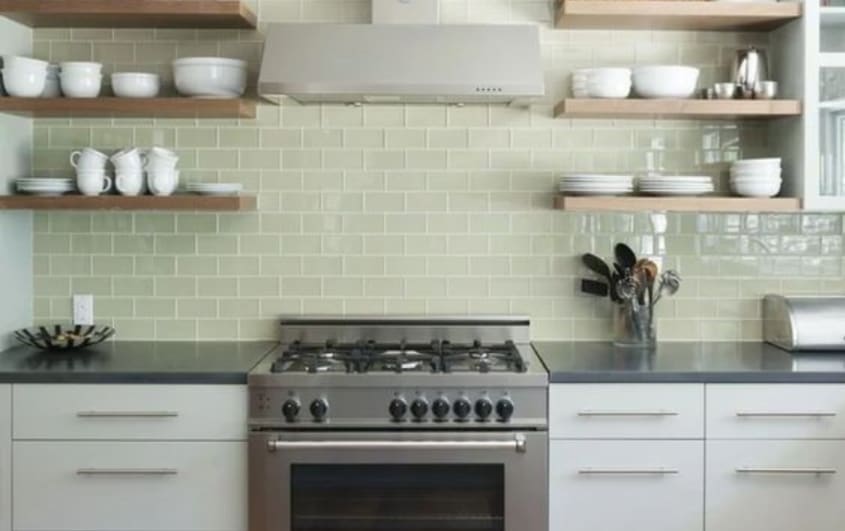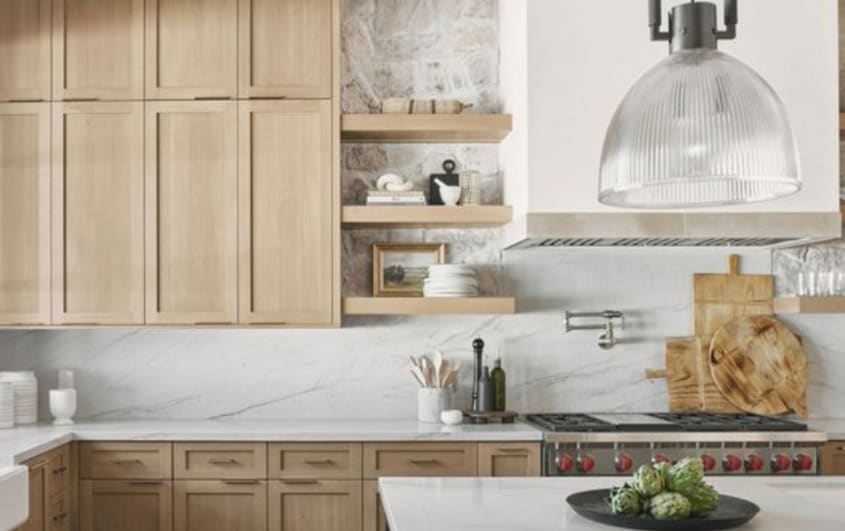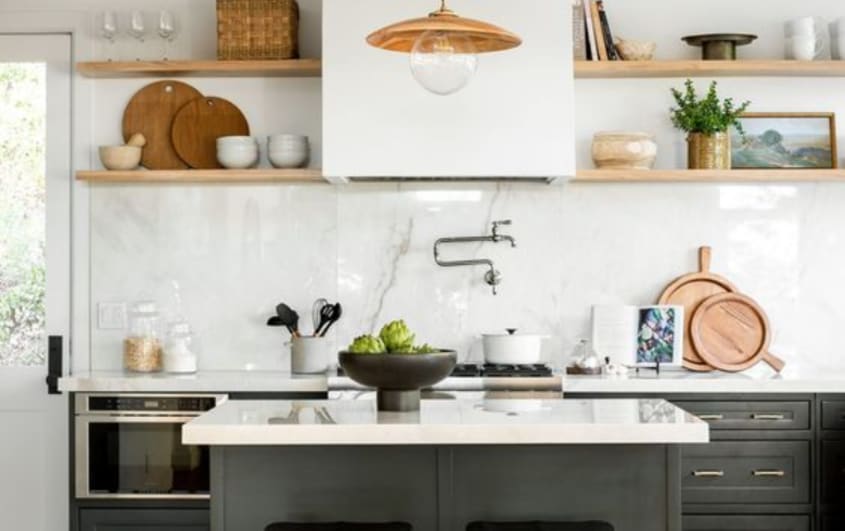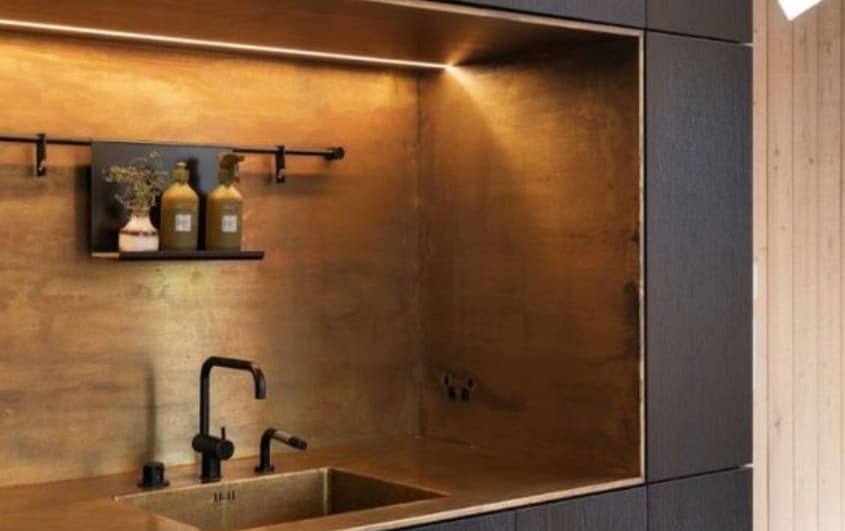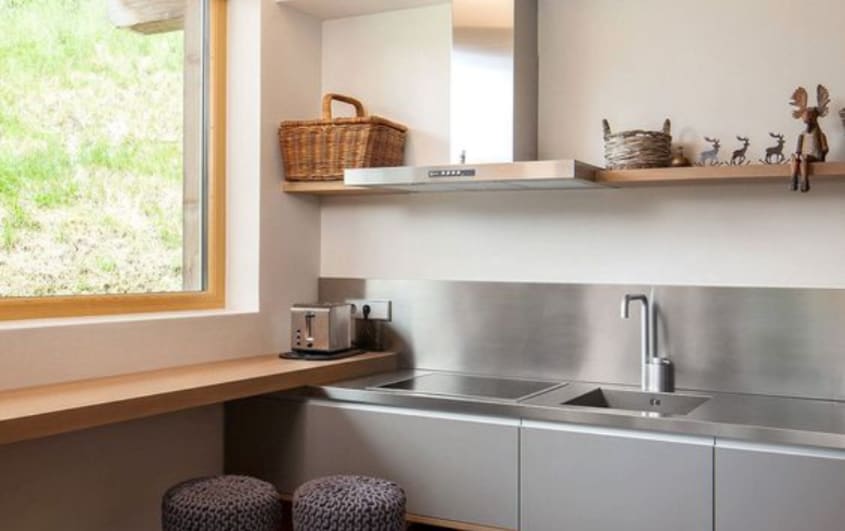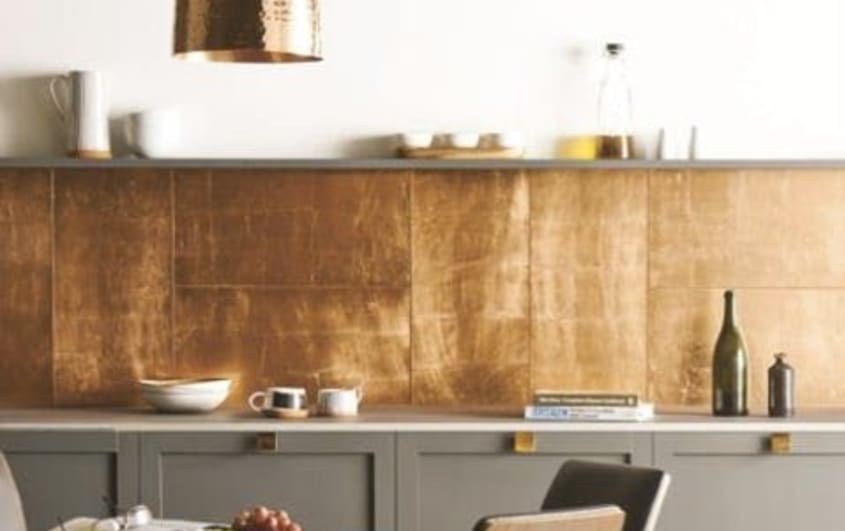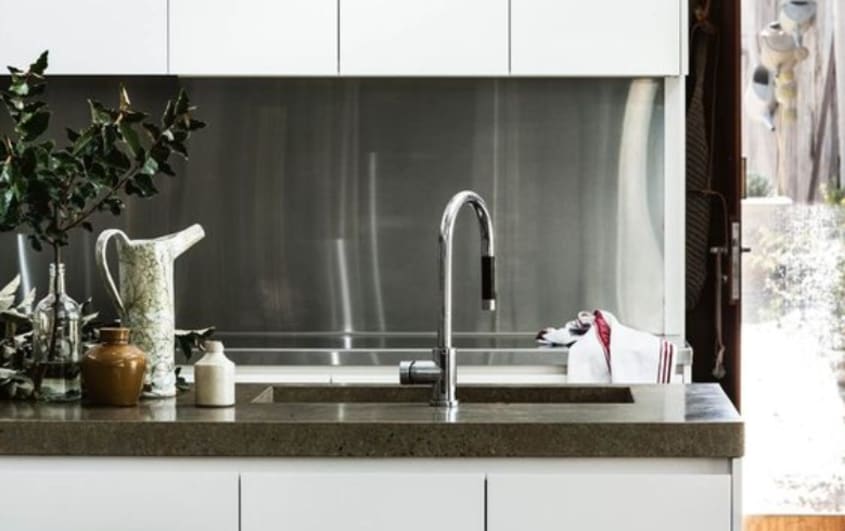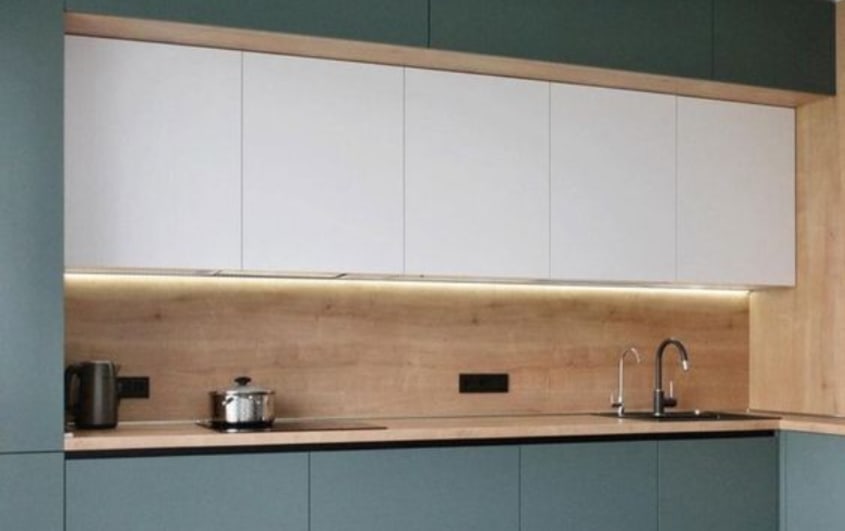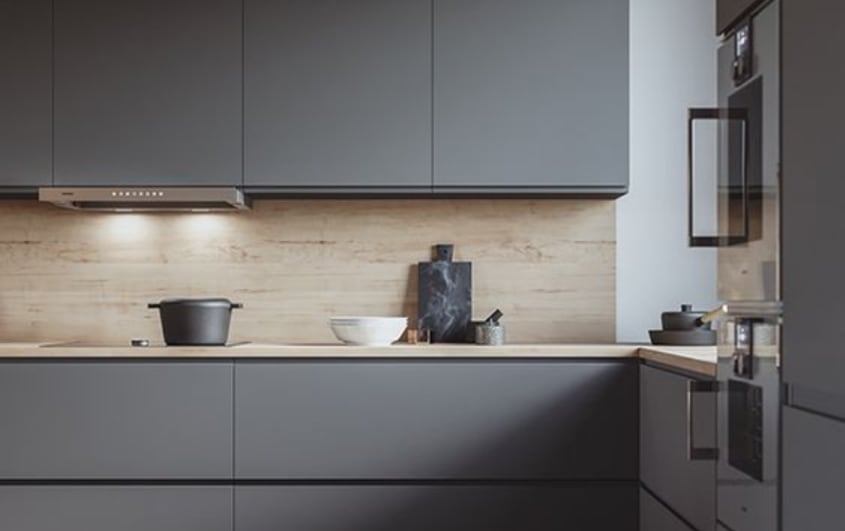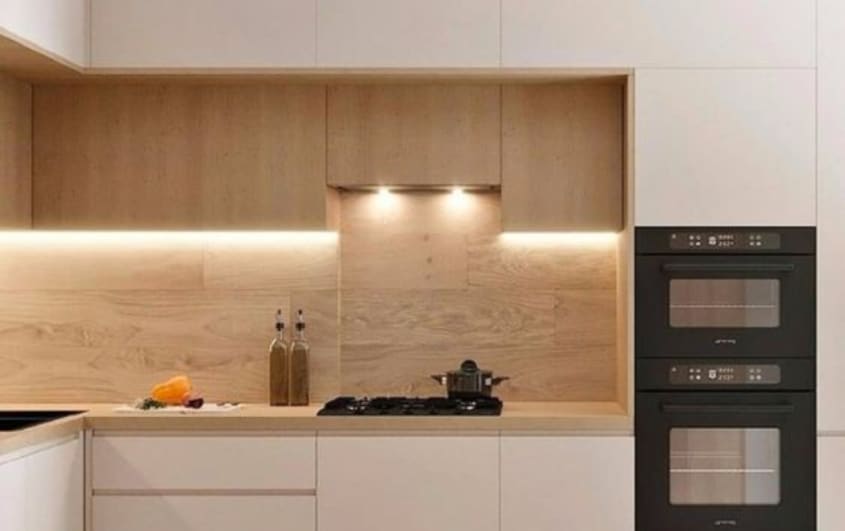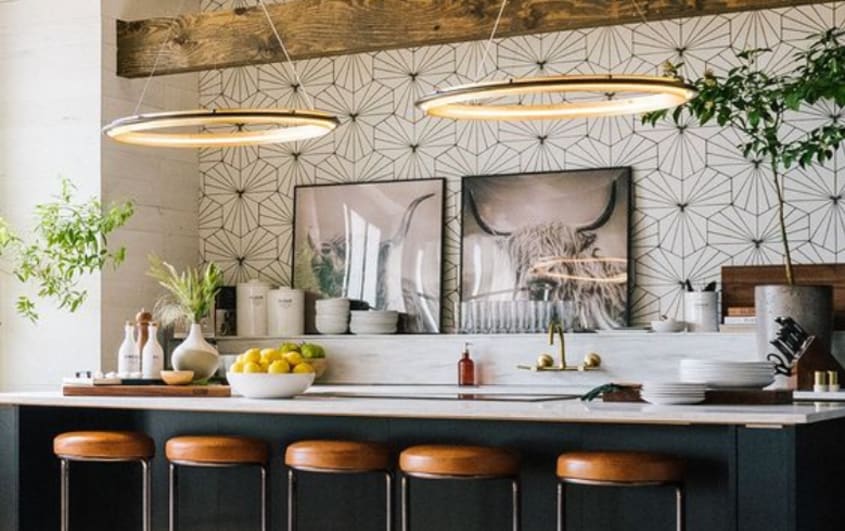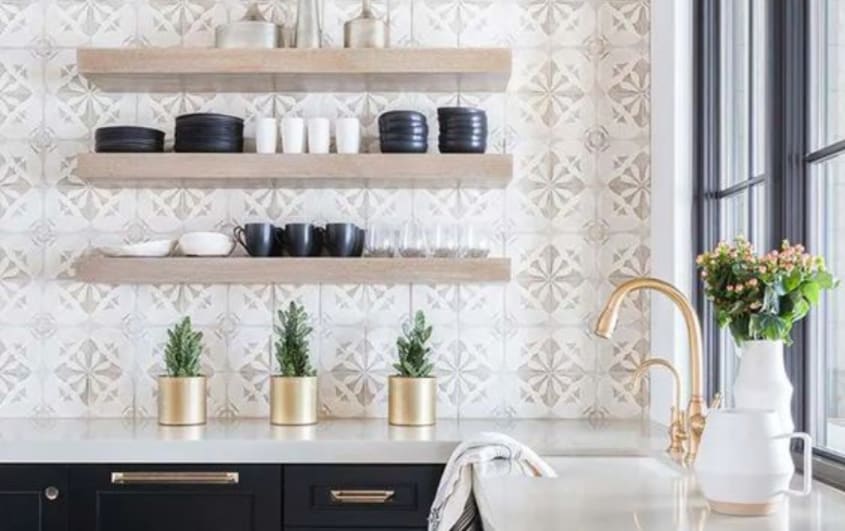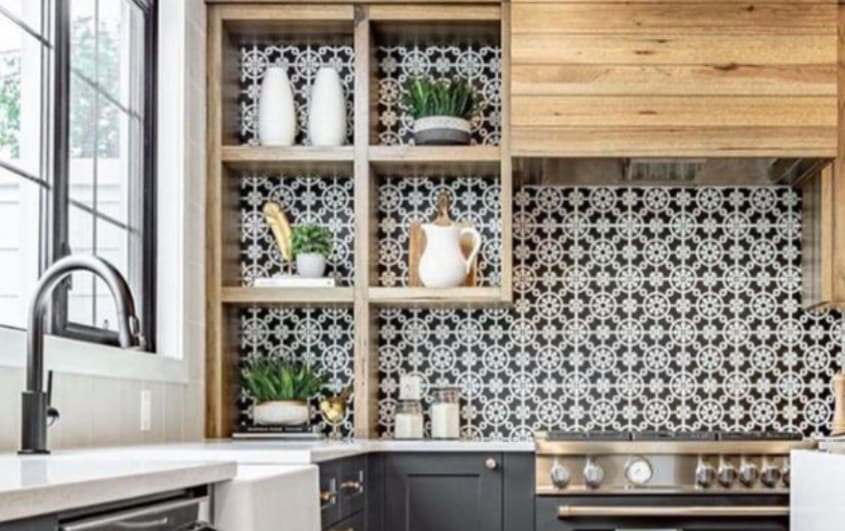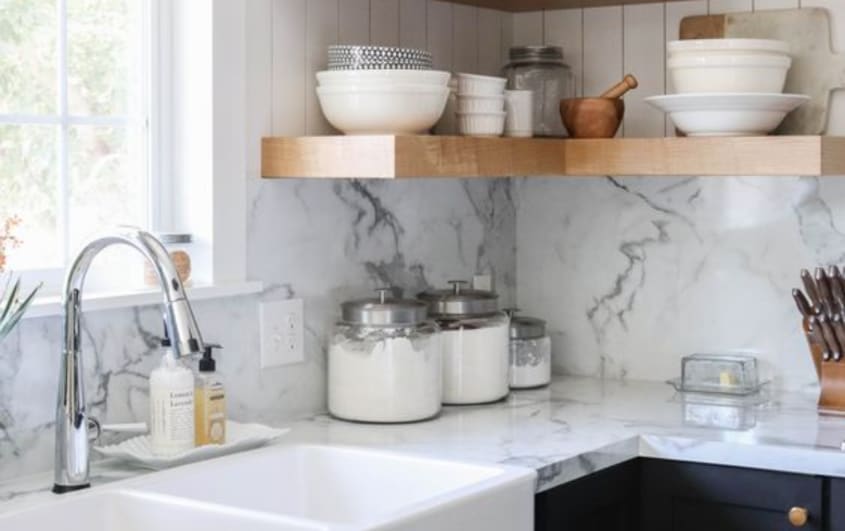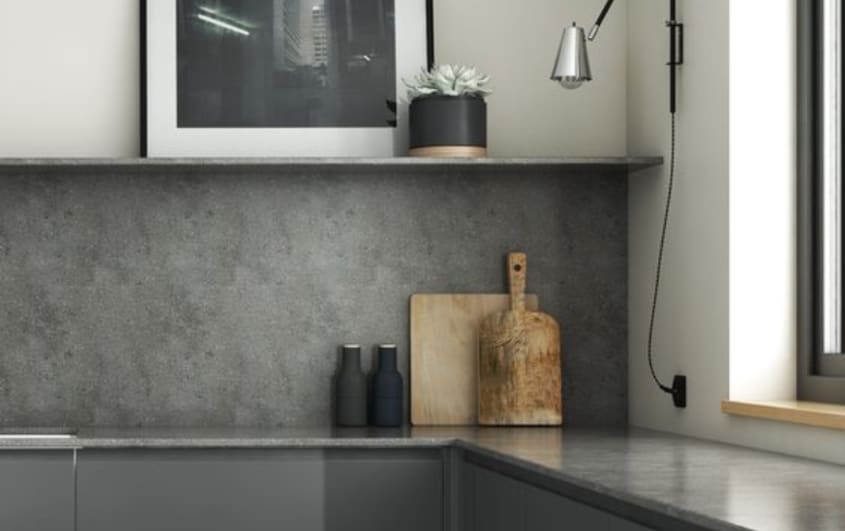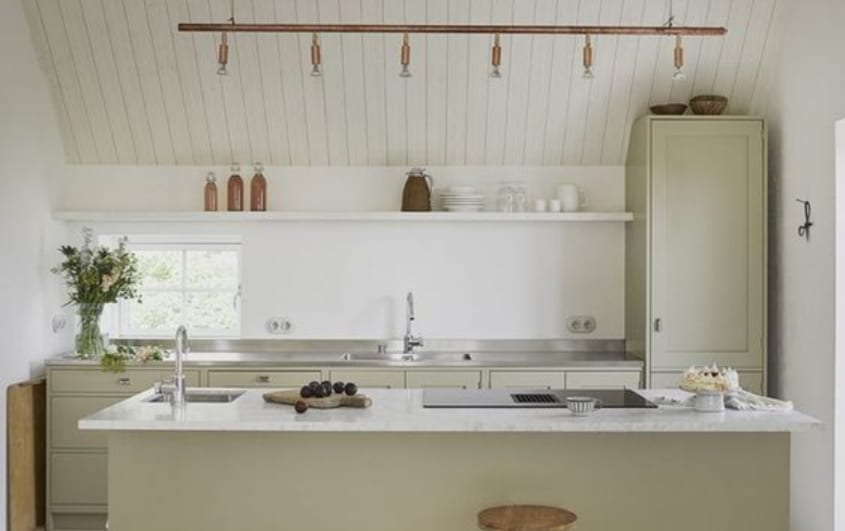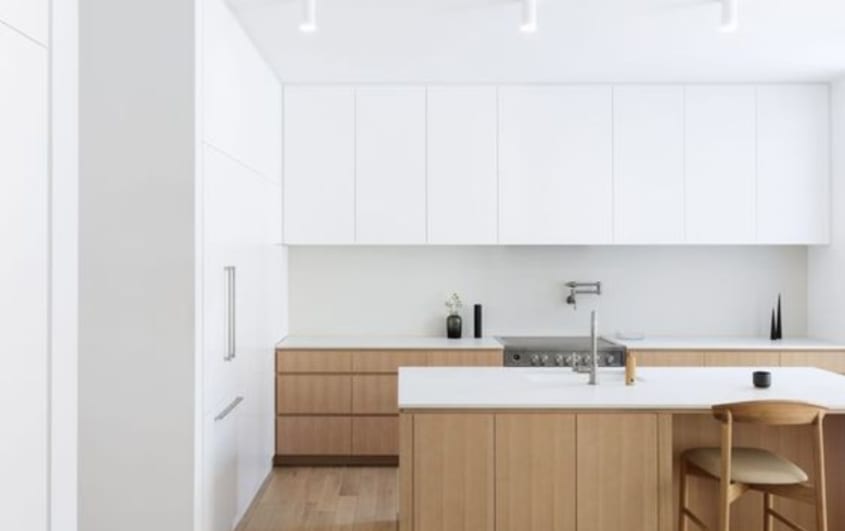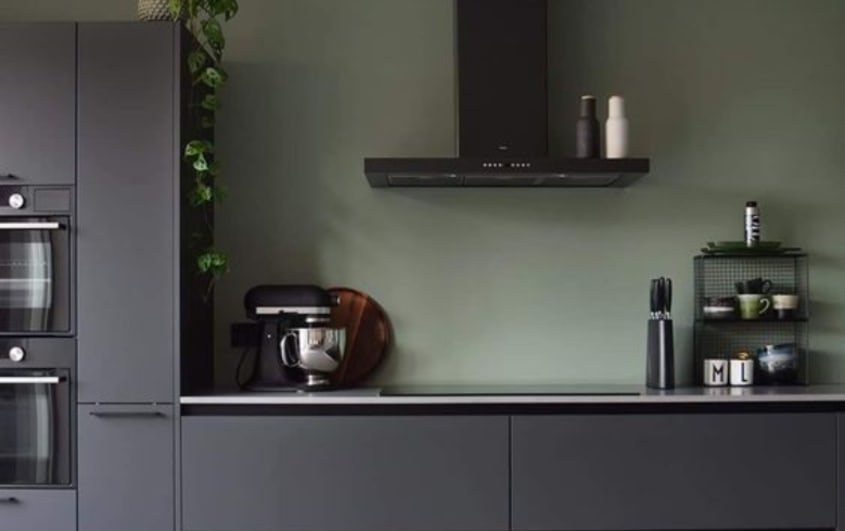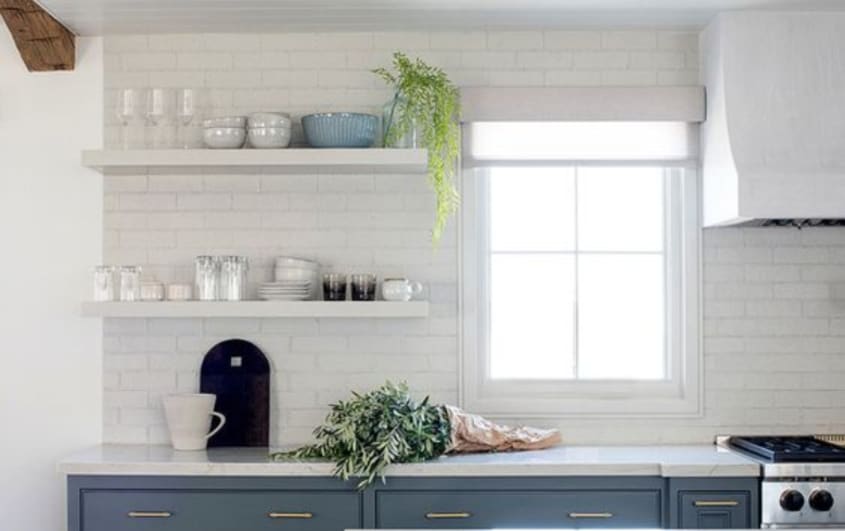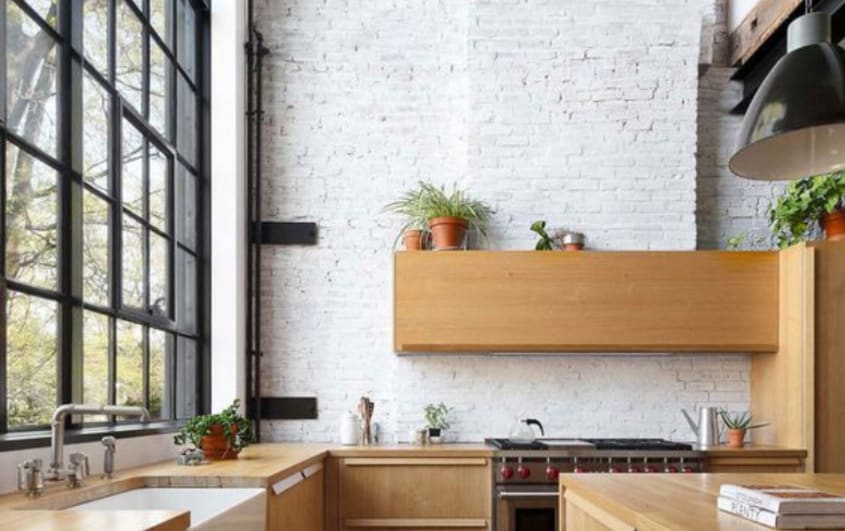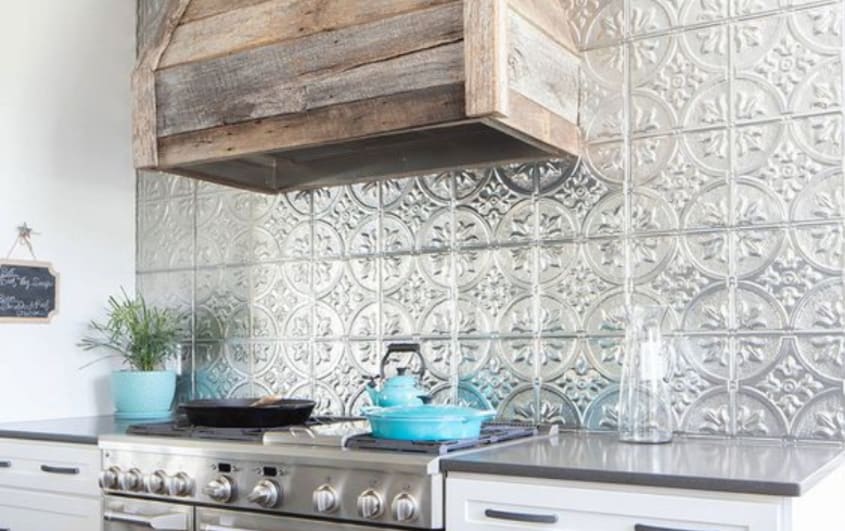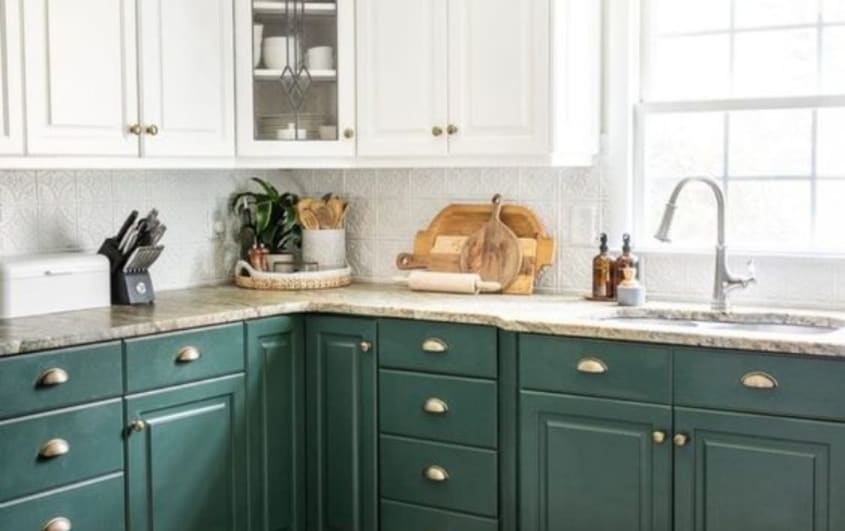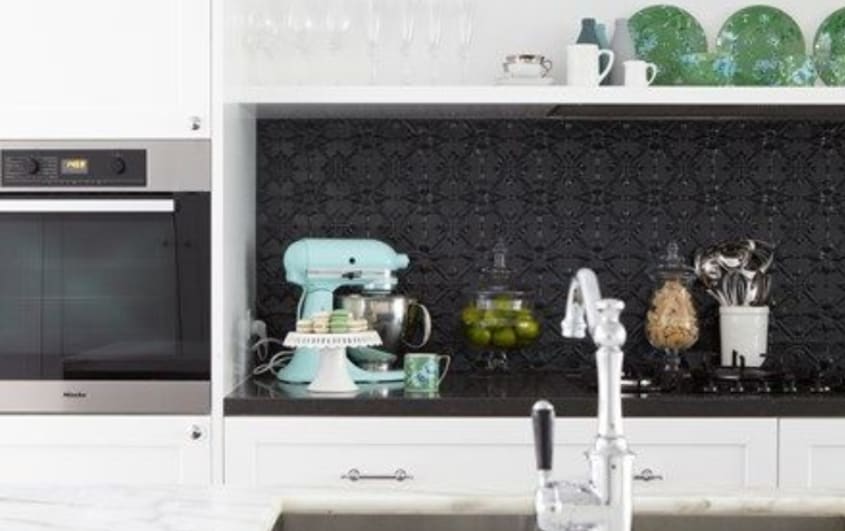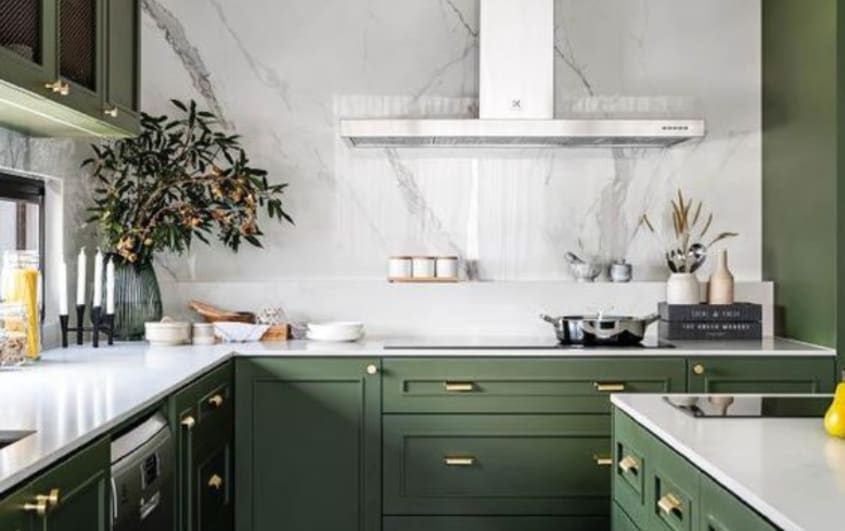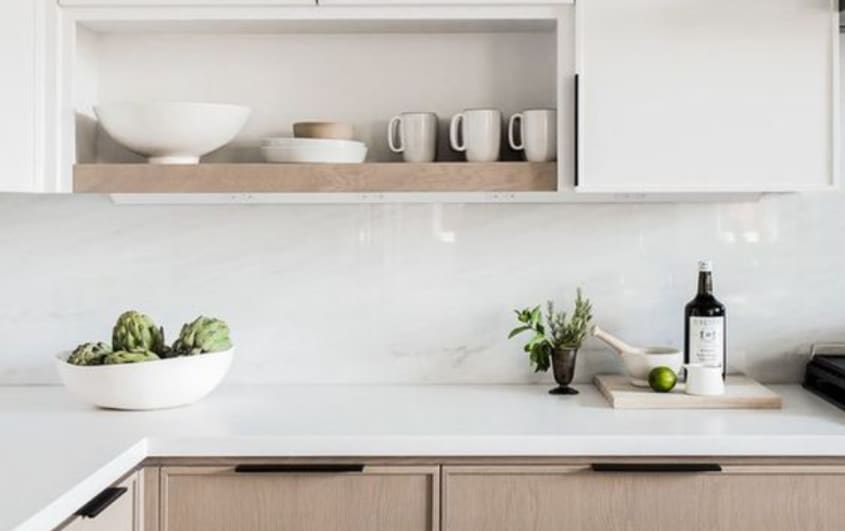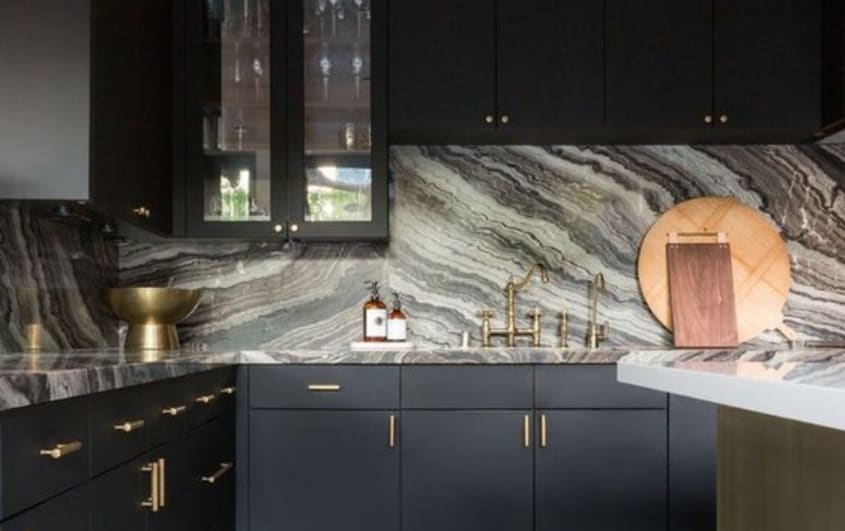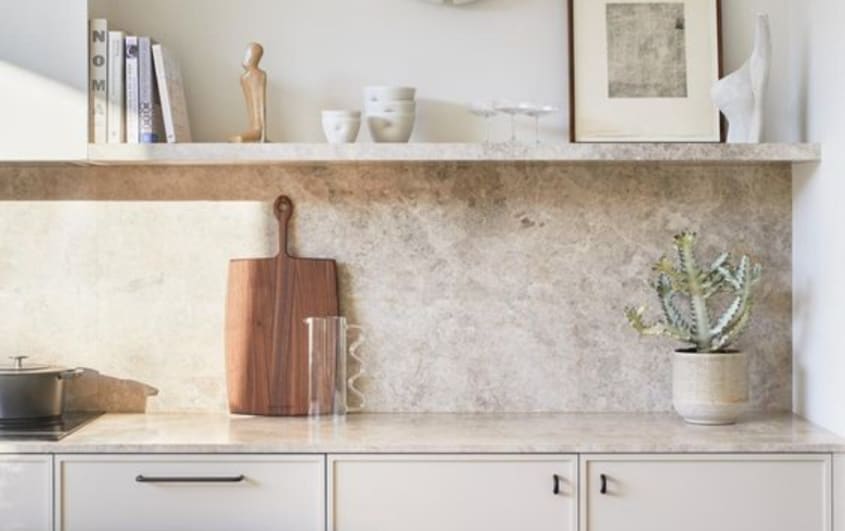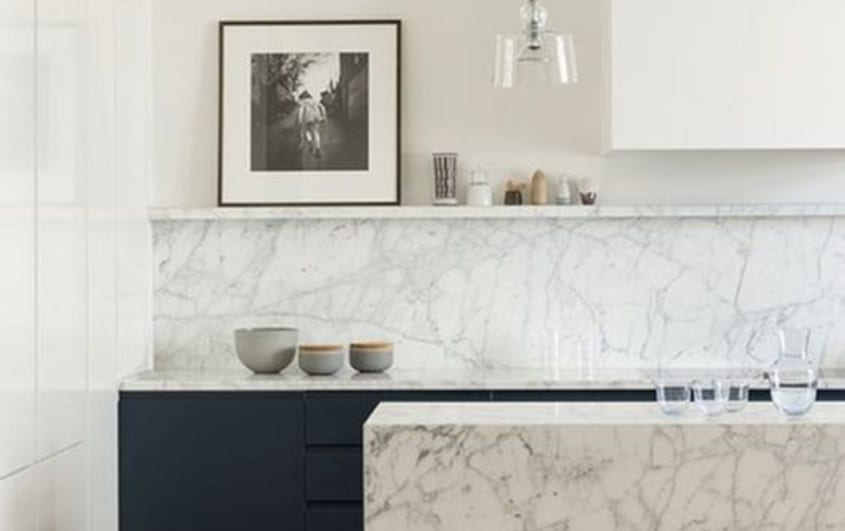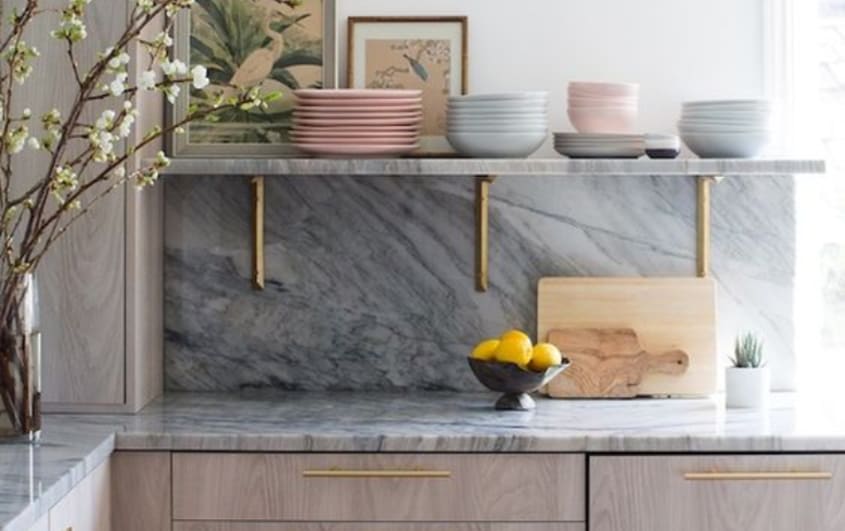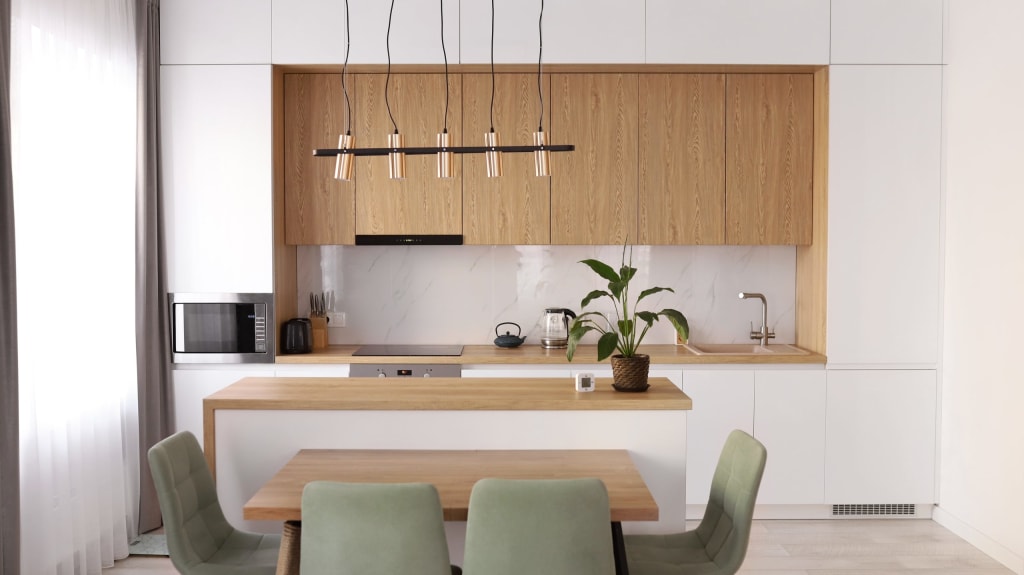Picking kitchen backsplash tiles can be one of the most difficult decisions during your remodel. You need to consider not only how they’ll look with the rest of your design but also the practicality of your chosen material. It’s important that your kitchen backsplash works for your home. So, take some time to find something that suits your taste, needs, and budget.
If you’re not sure what your ideal backsplash looks like, we can help. Let’s go over the most popular backsplash options on the market, their pros and cons, as well as their price points.
What is a kitchen backsplash?
A kitchen backsplash is the part of the wall, usually concentrated around the stove and sink, that often has a different material or design than the rest of the walls. The design often acts as an accent piece, and the material will usually be something that protects the walls from damage caused by food splatter, heat, and moisture. A good backsplash will extend the life of your kitchen design.
Is a backsplash necessary in a kitchen?
If you love spending time in the kitchen, backsplash tiles are a great addition to your kitchen design. While not strictly necessary, backsplashes save your walls and paint from harsh oils and other food splatter that may be difficult to clean.
If you use your stove regularly, it’s a good idea to get one. At the very least, you won’t have to deal with peeling or scratched paint from regular cleaning or scrubbing. If you don’t cook, then feel free to leave it out of your final design.
Choosing a kitchen backsplash tile design
Marble or concrete? Large or small tiles? Black satin or high gloss? There are lots of different tiles and designs to choose from. Before you start shopping around, here are a few things to consider when picking your backsplash.
Size of backsplash tiles
Tile size is going to depend heavily on the aesthetic you’re going for. For example, small tiles tend to work better for intricate mosaics while large tiles are better for covering a large surface area with a solid colour or repeating design. Apart from that, it’s just a matter of visual balance. Avoid tiles so large that they overwhelm your kitchen design as well as tiles so small that the pattern looks muddled.

Tile colour
Your tiles should fit the rest of the kitchen, either by matching or contrasting. It’s up to you if they should blend in or stand out, but make sure they don’t clash with other design elements.

Grout colour and thickness
Grout can be used to draw attention to or away from your backsplash. For a calm or subtle look, go with a neutral grout or one that matches your tiles. To make the tiles or grout stand out, choose a contrasting colour. Grout thickness should be proportional to tile size. For example, small tiles need thin grout to achieve a clean, cohesive look.
Style of backsplash tiles
It is important to keep your overall theme in mind when choosing a style of backsplash tiles. Glass tiles with a mix of colours are beautiful in some kitchens but would look quite out of place with a farmhouse theme for example.

What can I use instead of backsplash tiles?
There is an abundance of materials on the market that can be used in place of tiles for your backsplash, such as wood panelling, metal, and brick. With so many great options, you’re sure to find the right material to match your kitchen style. Just be sure to take your existing selections, such as cabinet finish and countertops, into consideration when picking your backsplash.
Kitchen backsplash ideas
If you’re not quite sure what the backsplash looks like in the kitchen of your dreams, you may want to start by perusing Pinterest, clicking through more resources on backsplash ideas, and checking out our info below on popular materials. We’ve laid out some pros and cons and rated each material on a scale of 1 star (worst) to 5 stars (best) for variety, ease of installation, durability, maintenance required, and overall cost.
Ceramic or porcelain backsplash tiles
Ceramic and porcelain have some of the best variety: they come in many different shapes, colours, and sizes! They can even mimic other materials like wood and marble. And, if you want something truly unique, you can buy local and get gorgeous hand-painted or handmade tiles (e.g., azulejos, Zellige tiles).
Of the two, porcelain is the more durable material, as well as the more expensive. That said, there are a wide variety of both types of tiles available at almost every price point, making them a good fit for almost any budget.
Variety: ★★★★★
Installation: ★★★☆☆
Durability: ★★★★☆
Maintenance: ★★★★☆
Cost: ★★★★★
Glass backsplash tiles and sheets
Glass backsplash tiles come in a wide variety of designs, with a few less colours than ceramic tiles. You can find styles at every price point too, making them a great choice for kitchen renovations on a budget.
Keep in mind that glass tiles are generally translucent, so any issues or deformities on the wall will be visible after completing your project. If your walls are clear of trouble areas, then you’re good to go. Grab some nice handmade tile or put a glass sheet over a painted mural to bring a little shine to your kitchen backsplash. Just remember to order a few extra tiles as replacements in case of breakage down the road.
Variety: ★★★★☆
Installation: ★★★☆☆
Durability: ★★★☆☆
Maintenance: ★★★★☆
Cost: ★★★★☆
Stone slabs and backsplash tiles
Stone is a popular material for kitchens, particularly if you want a high-end look. Of course, as is often the case with beautiful slabs and tiles, you pay a premium for a luxurious kitchen backsplash. There is a fair variety of stone available, such as marble and travertine, and multiple options for each regarding tones and veining. Slab stone is often more expensive and installation without damage can be tricky but allows for custom edge shapes if you don’t want just a plain lip. Many types of stone need to be resealed to prevent moisture damage, so be ready to do some routine maintenance to keep it looking like new.
Variety: ★★★☆☆
Installation: ★★★☆☆
Durability: ★★★☆☆
Maintenance: ★★☆☆☆
Cost: ★★☆☆☆
Metal backsplashes
If you’re looking to add a contemporary touch to your new kitchen design, then you’re in the right place! Metal is currently one of the top kitchen trends and for good reason. It not only gives your kitchen a polished and professional feel, but it’s also durable and easy to clean.
Shiny or matte, smooth or textured, plain or patina… With this kitchen backsplash material, there are a lot of options to play with. Alternatively, you can go with a solid metal backsplash for a sleek industrial look.
Variety: ★★★☆☆
Installation: ★★★☆☆
Durability: ★★★★☆
Maintenance: ★★★★☆
Cost: ★★★★☆
Wood panel backsplashes
Want to bring that cottagecore vibe to your kitchen? Wood paneling may be just the thing you need. Reclaimed wood is great for added character without the environmental impact that comes with new materials. Before you fall in love with beautiful shiplap for your reno, be sure to check your local fire codes to verify where you can add wood to your kitchen.
Variety: ★★☆☆☆
Installation: ★★★★☆
Durability: ★★★★☆
Maintenance: ★★★☆☆
Cost: ★★★☆☆
Wallpaper and peel-and-stick backsplash tiles
If you’re looking to save on your kitchen renovation, peel-and-stick and wallpaper are worth considering. Peel-and-stick tiles are everywhere, including the dollar store. They are one of the most affordable options available with straightforward installation you can easily do yourself. There are more high-end options available so no one can even tell you didn’t break the bank on your kitchen backsplash.
As for wallpaper, there are beautiful options available for any budget. There are even options for hand-painted and custom designs, allowing you to easily create the perfect focal point. Unfortunately, wallpaper and peel-and-stick are a bit lacking in durability. To make them last longer, be sure to look for options that are waterproof and easy to wipe down.
Variety: ★★★★☆
Installation: ★★★★☆
Durability: ★★★☆☆
Maintenance: ★★★☆☆
Cost: ★★★★☆
Laminate backsplashes
This low-cost versatile material can help you save money on multiple parts of your kitchen remodel, including the backsplash. You can even DIY with budget-friendly options offered at your local IKEA. Laminate can be a great way to give your kitchen the look of an expensive material without the big price tag. Though, what you save in cost will be lost in durability. This plastic material may need to be replaced sooner than others, such as stone or ceramic, leading to more costs down the road.
Variety: ★★★★☆
Installation: ★★★★★
Durability: ★★☆☆☆
Maintenance: ★★★☆☆
Cost: ★★★★★
Painted backsplashes
When it comes down to it, using a protective material for your kitchen backsplash isn’t entirely necessary. Using the same paint as the rest of your kitchen behind the stove and sink areas is perfectly fine, especially if you don’t find yourself cooking very often.
Alternatively, you could paint something creative like a mural to create a focal point or mimic another material like brick. Paint alone may not fare as well against food splatter and humidity, so it is important to source high-quality paint for your project.
Variety: ★★★☆☆
Installation: ★★★★★
Durability: ★★★☆☆
Maintenance: ★★★☆☆
Cost: ★★★★☆
Brick backsplashes
Brick can bring a lot of texture and character to a room. The price for regular brick is reasonable, but if it is still a little much for your budget, there are great brick veneer options out there as well. Maintaining a porous material in a humid space can be a pain, but the timeless look can’t be beat.
Variety: ★★☆☆☆
Installation: ★★☆☆☆
Durability: ★★★★☆
Maintenance: ★★★☆☆
Cost: ★★★☆☆
Thermoplastic backsplash tiles
Thermoplastic offers the look of metal tile without the hefty price tag. While there is some lessened durability, the results can look pretty close to the real deal. If you’re looking for ideas for your kitchen renovation, a funky-looking backsplash material like thermoplastic may be just what you need.
Variety: ★★★☆☆
Installation: ★★★★☆
Durability: ★★★☆☆
Maintenance: ★★★★☆
Cost: ★★★★☆
Resin backsplashes
Resin offers a unique way to bring some fun to your kitchen design. It comes in many shapes, sizes, and colours – even solid slabs for seamless coverage. Resin is great for kitchens as it does not absorb water, does not develop mould, and is fairly durable.
Variety: ★★★★☆
Installation: ★★★★☆
Durability: ★★★★☆
Maintenance: ★★★★☆
Cost: ★★★★☆
Extended countertop backsplashes
Extending your countertop to cover the first four inches or so of your wall is a convenient way to take care of your counters and backsplash in one go. The extra material for this is sometimes included with your counter. If not, the cost is less than many other materials and installation can be done at the same time as the countertops, making for a smoother renovation.
Variety: ★★★☆☆
Installation: ★★★★☆
Durability: ★★★☆☆
Maintenance: ★★★★☆
Cost: ★★★★☆
Tiling the way to a gorgeous kitchen
Choosing the right kitchen backsplash material can be tough, especially if you’re not familiar with the most common materials or what their drawbacks are. Now that you’ve explored your options, it’s time for the fun part: browsing completed projects for inspiration! Just don’t forget to check out our kitchen renovation guide and renovation costs before those luxury tile choices win you over.
